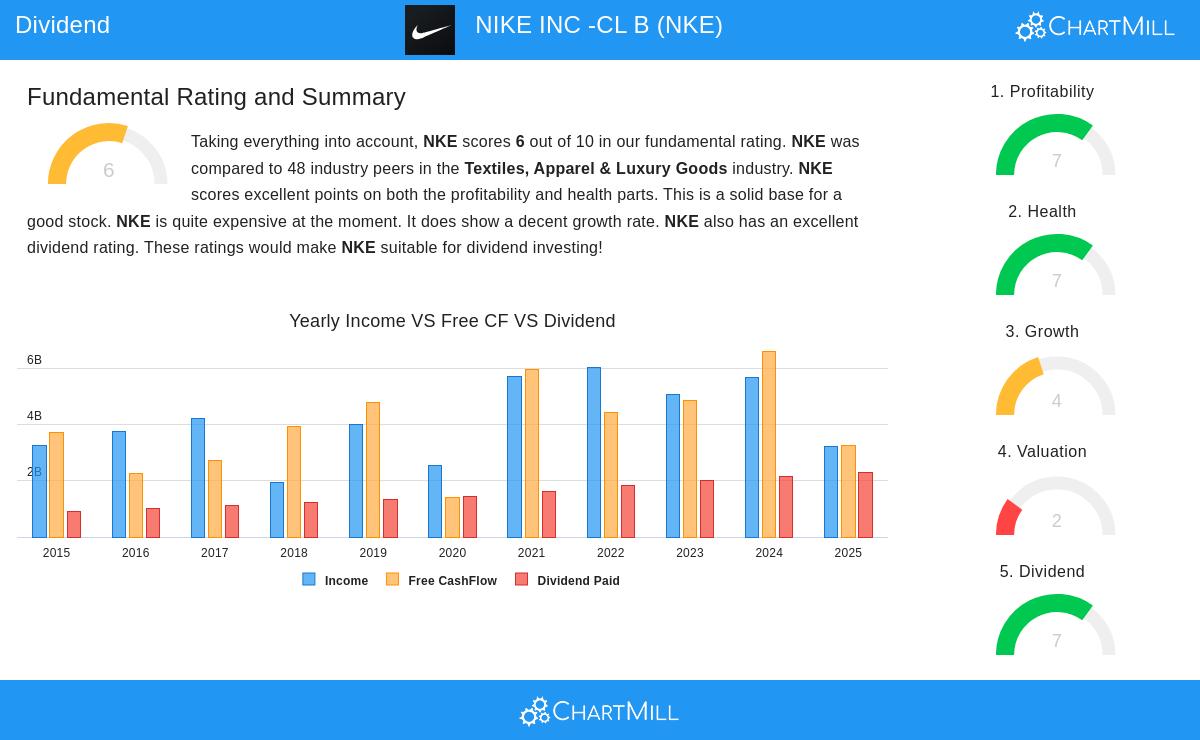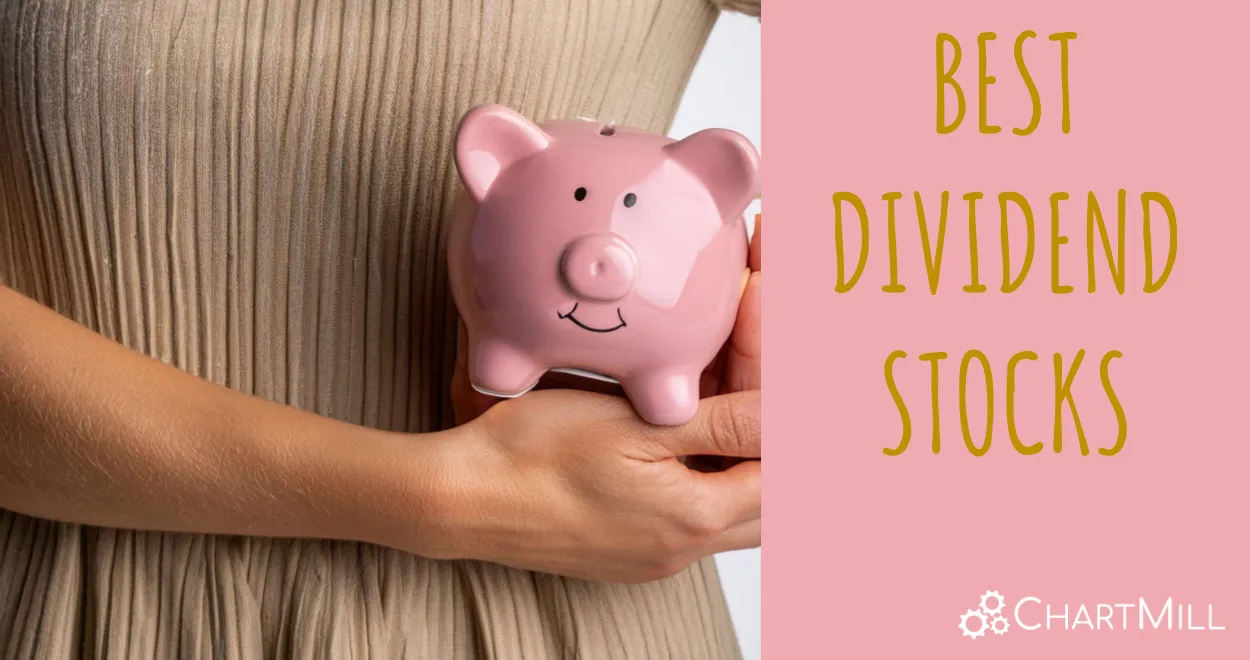Nike (NYSE:NKE) Demonstrates Strong Dividend Growth and Financial Health for Long-Term Investors
For investors looking for dependable income, dividend investing is a key method for creating lasting wealth. The method focuses on finding companies that not only provide regular dividends but also have the financial stability to keep and possibly raise those payments in the future. Applying a structured filtering process that focuses on good dividend traits together with acceptable profitability and financial condition helps investors steer clear of high-yield situations where unmaintainable payments can point to deeper company issues. This measured method favors good companies with maintainable dividend practices instead of pursuing the largest yields.

Dividend Profile Assessment
NIKE INC -CL B (NYSE:NKE) shows a number of positive traits for investors focused on dividends. The company’s dividend information shows both steadiness and expansion possibility, important elements for lasting income plans.
- Present dividend yield of 2.25%, doing better than 81% of similar companies
- History of ten years of steady dividend payments with no cuts
- Notable 10.70% average yearly dividend increase in recent years
- Dividend expansion backed by higher earnings growth, pointing to maintainability
The mix of a steady payment history and significant dividend growth makes Nike especially interesting for investors wanting income that may stay ahead of inflation in the long run. The company’s capacity to regularly raise dividends shows management’s belief in future cash generation and dedication to shareholder returns.
Profitability and Financial Condition
Apart from dividend measures, Nike shows good basic business foundations that back ongoing dividend maintainability. The company’s profitability scores point to effective operations and a good market position in the athletic wear industry.
- Return on Equity of 21.50% is higher than 79% of industry rivals
- Return on Invested Capital of 10.87% is better than 73% of sector counterparts
- Three-year average ROIC of 16.64% shows past performance
- Profit margin of 6.23% is ranked above 79% of industry firms
Financial condition numbers further support Nike’s ability to keep up dividend payments during different economic periods. The company holds a current ratio of 2.19, indicating good short-term cash availability, while an Altman-Z score of 4.50 points to very low failure risk. These condition markers give assurance that Nike can handle economic slowdowns without reducing its dividend obligations.
Valuation Assessment
While Nike’s dividend traits and basic strength are positive, investors should look at present price levels when making investment choices. The stock is priced at high multiples compared to its own history and some industry counterparts.
- Price-to-Earnings ratio of 31.90 is higher than 63% of industry rivals
- Forward P/E ratio of 27.79 is still high compared to sector averages
- Enterprise Value to EBITDA ratio seems costly versus industry standards
These valuation measures imply investors are paying for quality, but the high price might reduce short-term price gain potential. For dividend investors with long-term views, the valuation could be acceptable given Nike’s strong brand, worldwide reach, and steady performance.
Growth Path and Dividend Maintainability
Nike’s future growth outlook supports the argument for ongoing dividend raises. Analyst forecasts show speeding earnings growth that should give sufficient coverage for future dividend increases.
- Anticipated EPS growth of 17.01% per year in the coming years
- Expected revenue growth of 4.91% supporting sales expansion
- Payout ratio of 80.59% is currently high but backed by growth projections
While the present payout ratio seems elevated, the pairing of strong anticipated earnings growth and the company’s historical control suggests Nike can continue its dividend growth path. Investors should watch if actual earnings match forecasts to make sure the payout ratio returns to more maintainable levels over time.
For investors wanting to research similar dividend options, more filtering results can be found using the Best Dividend Stocks screener. This instrument allows more adjustment based on particular dividend yield choices, financial condition needs, and profitability limits.
This assessment is based on fundamental data and scores accessible via ChartMill’s detailed reporting system. The full fundamental analysis report for Nike gives more information on all assessed measures. This article offers objective assessment of available data and is not investment guidance. Investors should perform their own research and think about their personal financial situation before making investment choices.


